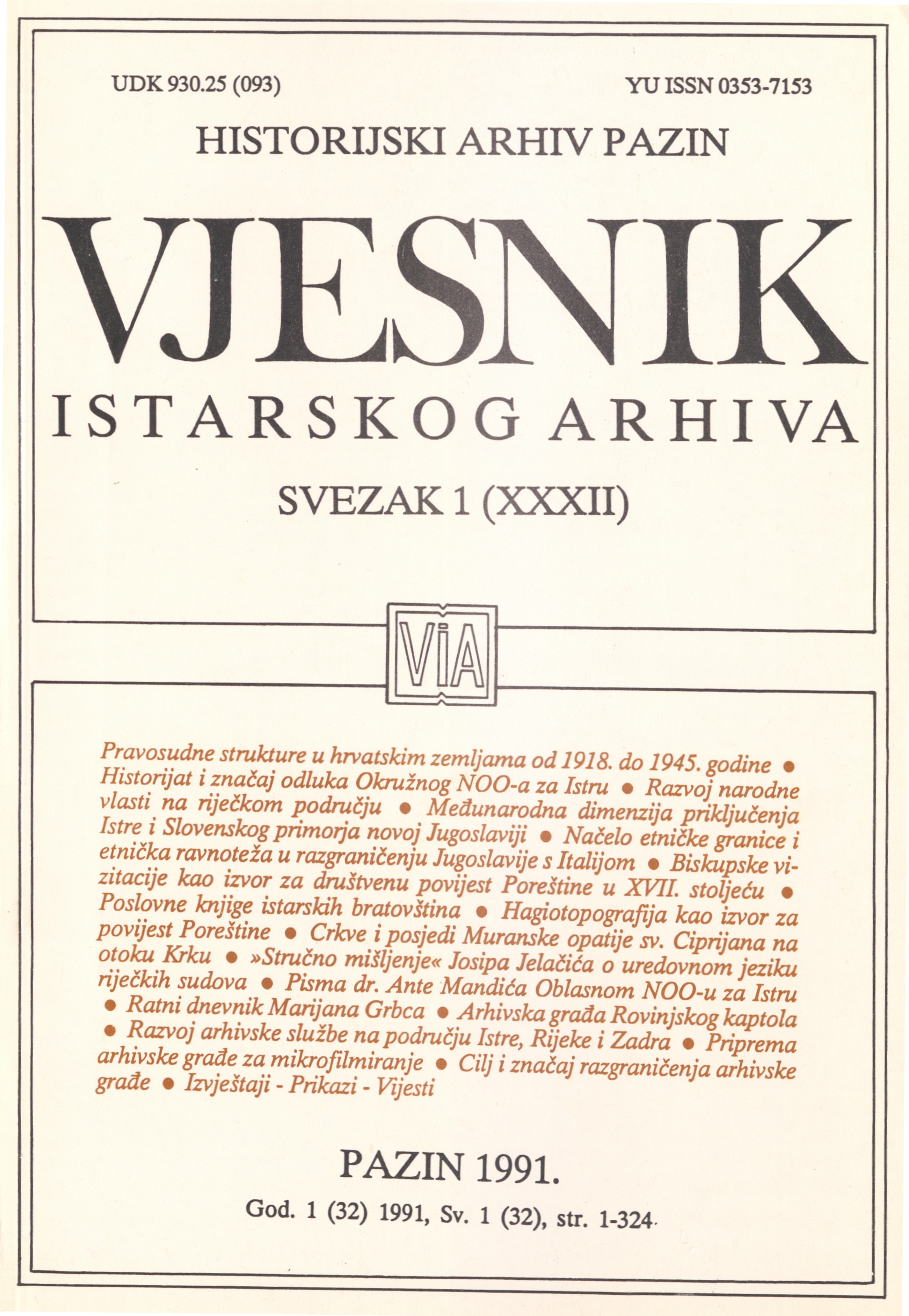The Objectives and Importance of Archive Classification
Abstract
The author discusses the problem of drawing demarcation lines among different archives on one hand, and, on the other, between archival and quasi-archival institutions. The author argues that dealing with this problem through recommendations, instructions and agreements as practiced so far in the post-war period has been inefficient and that it should be subject to appropriate legislation. Libraries, museums, film libraries and other related institutions should not keep records other than those assigned to them. Also, the principles of the indivisibility of allotted funds and competence of individual archive centres should be strictly observed. In distributing and integrating the archive records the criteria of individual competence and the origin of respective funds should be applied. Merging funds is a precondition for their rational utilization for various purposes including effective maintenance of and care for archive materials. The first thing to be done in the author’s opinion is to classify the records kept and funds available within individual archives (in order to determine if some materials should be kept elsewhere) and within registries (due to frequent changes in the competence of individual archivists). Classification should then be carried out among archives, otherwise little room would be left, and no moral right, for further redistribution with libraries, museums and other related institutions. This is trickiest part of the job, most of all because of vaguely defined regulations in this field, and requires a joint effort on the part of archives and these institutions. Should no agreement be reached, the parties involved must insist on proper protection and treatment of archive records in compliance with established archival criteria. The same applies to ensuring conditions for their utilization, such as accessibility, integration into the archive information system, etc. A part of the problem could be solved by copying. Finally, the author makes a number of suggestions on specific actions to be taken in order to solve the archive classification problem conclusively and rationally.
Downloads
Published
Issue
Section
License

This work is licensed under a Creative Commons Attribution-NonCommercial 4.0 International License.

